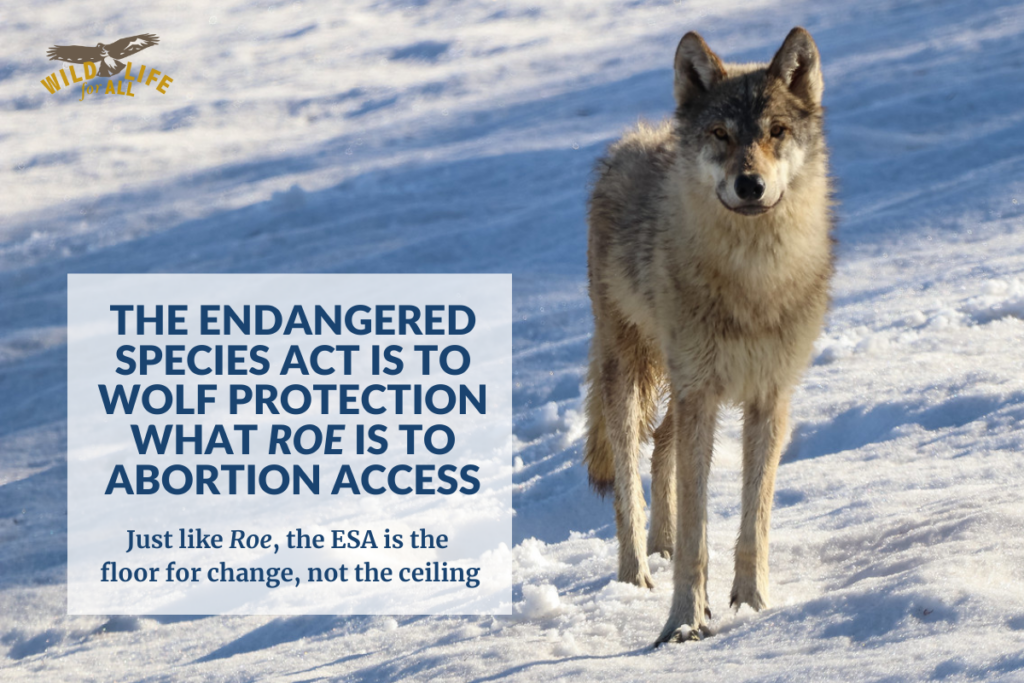
The Endangered Species Act (ESA) is to wildlife conservation what Roe v. Wade is to reproductive rights: the floor for change, not the ceiling.
Hear us out: The ESA has stopped wolves from going extinct, but because of lawmakers and agencies catering to narrow interests promoting indiscriminate killing, it has not done a great job at maintaining wolves in their role as apex predators with functional ecological densities.
Similarly, abortion activists relied for decades on Roe as a stopgap against the worst attacks against access. Yet that was false safety that let people feel secure with defense, and the movement never built power to fight growing anti-abortion narratives (especially after 2010), much less bills and lawsuits that slowly eroded Roe’s efficacy over time.
Now, activists are working to enshrine new state laws and develop proactive ballot measures to protect—or restore—access to abortion in their states after the June 2022 Dobbs decision that removed federal protections for abortion. “Roe is the floor, not the ceiling” was a call first issued by reproductive justice activists that has become a movement rallying cry.
Wolves are a similar issue. Sadly, they are often sold out by politicians on both sides of the aisle as political bargaining chips. And those of us who care about wolves, just like people who fight for abortion access, are behind on building the ground game to protect them.
Recovery for most species is far beyond the bare minimum back-stop the ESA provides, but that is the best tool we have at the moment. Large carnivores have critical habitats that are constantly changing with climate change, agriculture and development, and trophy hunting. The ESA is the floor, not the ceiling. It can’t bring wolves back to full species recovery, and we can’t rely on its protections forever.
“The ESA is clear: its goal is to prevent extinction, not to restore species to their pre-western settlement numbers and range,” U.S. Department of Justice attorneys wrote last month in their filing against gray wolves.
At this critical juncture, we have an opportunity to build a movement with values at its center. We need to reshape how people think about wolves and predators in general, building a culture that values their ecological roles and intrinsic value.
We also need democratically inclusive plans from states and USFWS, ones that reflect diverse public interests to protect wolves while working with the very small number of citizens who experience conflict.
On the whole, we must build an enduring movement for wolves and wildlife. We won’t sugarcoat it: this will be a long, hard slog. There are no quick fixes.
But even when decision-makers seem to ignore our voices, we must keep speaking louder and more confidently. We demand a seat at the table. This is what the hard work of culture change is all about—co-creating new systems of governance that truly reflect diverse values, interests, and voices, whether they come from the scientific community or traditional ecological knowledge or personal experiences with wild nature.
Ultimately, relying solely on federal protections leaves wolves vulnerable. Those protections can be taken away, as we’ve seen time and again. Reforming state-level governance is the key to ensuring wolves and the ecosystems they support can thrive for generations to come. This is how we secure a lasting future for wolves—not just through litigation, but through lasting change in how states manage wildlife.
Watch our full webinar on how to create state-level change for wolves, and get involved today.
